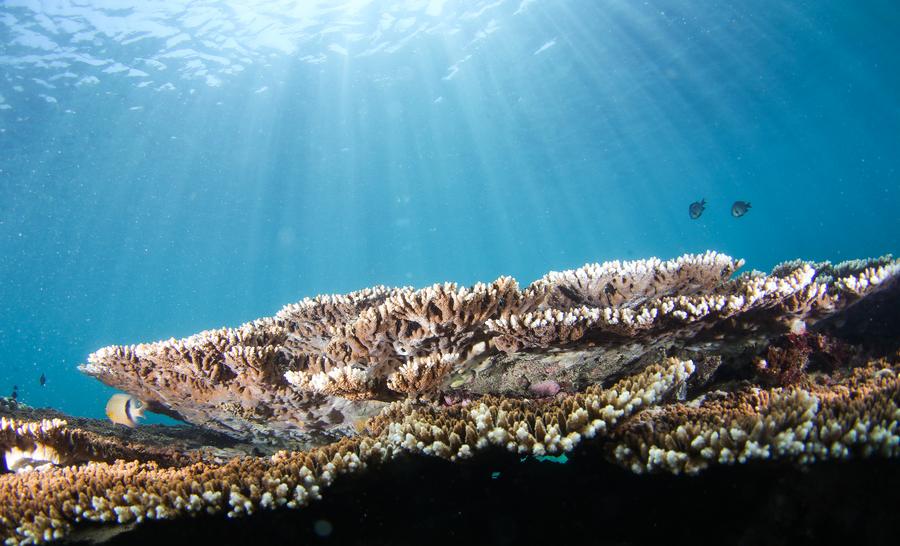
JINAN — Carrying an oxygen tank and wearing a diving suit, Zhang Peidong, a professor from the Ocean University of China, dived into a sea area off the city of Weihai in East China's Shandong province to take samples from the seabed and bring them back for testing.
"I've been diving for 16 years but I'm still excited every time I dive down as I can see an underwater 'grassland' thriving with fish, shellfish, sea cucumbers and other marine animals. The atmosphere, full of life and vigor, is pleasing," Zhang says.
The underwater "grassland" is the seafloor covered with seagrass, also known as seagrass beds. It is the habitat and shelter of various marine life. However, due to the human activities and changes in the natural environment, a large number of seagrass beds have disappeared globally.
READ MORE: Study: Climate change shrinks marine life richness near equator
In 2008, Zhang, who had just obtained his doctorate from the Ocean University of China, and Li Wentao, who was then pursuing a doctorate at the university, came to Rongcheng Bay in Weihai, a representative area of seagrass beds in the country, and found that the problem was quite worrying.
"The number of overwintering swans has plummeted in the local Swan Lake due to the significant decrease in seagrass, a major source of food for the birds," Li says.
The submarine ecological crisis drove the two men to adjust their research direction from aquaculture to the seabed ecological restoration, which received little attention at the time.
A Weihai-based company Mashan Group was also interested in marine ecology protection and has since provided various support free of charge including workshops, office space, catering and accommodation, and manpower for the research team.
Wang Xiaodong, general manager of the company, says that most of the company's employees are the children of fishermen who are willing to do something for the restoration of seagrass beds.
After a long time of hard work, the research team developed an artificial cultivation technology of eelgrass seedling after figuring out the growth rules and the best timing to pick seeds.
ALSO READ: Surprise rescue of Jamaica coral reefs shows nature can heal
The technology advancement shortens the eelgrass seeds germination stage from nearly three months in the natural environment to just 10 days. Researchers have also developed several sets of equipment with independent intellectual property rights to improve the planting efficiency.
During the past 16 years, the research team has participated in more than 10 submarine ecological restoration projects in the country, restoring and maintaining more than 1,333 hectares of seagrass beds in the Yellow Sea and Bohai Sea.
Currently, more than 40 percent of Swan Lake's seagrass beds have been restored, attracting an increasing number of swans to the area to spend the winters. The seagrass bed restoration technology has also been applied in other provinces such as Hebei and Liaoning, boosting the local water quality and biodiversity.


